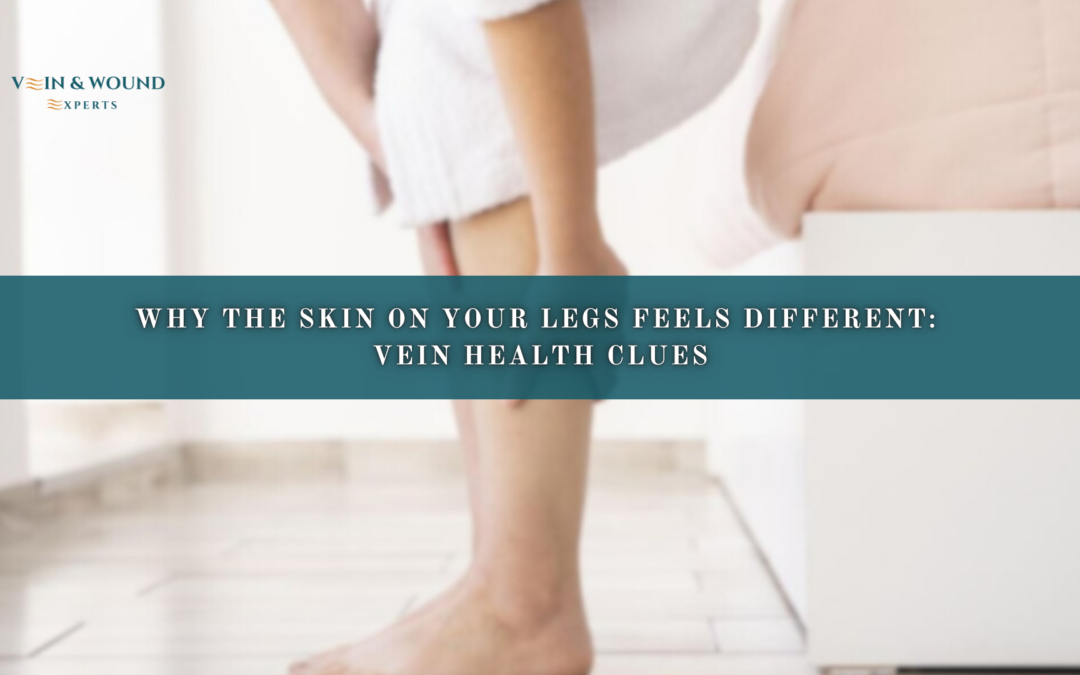Skin Changes Linked to Vein Conditions
Noticing subtle differences in the skin of your legs can provide important clues about underlying vascular health. Many people assume that dry, shiny, or thin skin is simply a cosmetic concern or a result of aging, but these skin changes on legs poor circulation often signal early disruptions in blood flow. When veins struggle to return blood efficiently to the heart, pressure builds within the vascular system, which gradually affects the skin. Early recognition of these signals can prevent progression to more severe conditions and promote better long-term vein health.
🩺 Early-Stage Skin Indicators
In the initial stage of vein-related skin changes, the signs are usually subtle. The skin may appear slightly paler or drier than usual. Some individuals notice mild itching or a sensation of tightness around the ankles or lower calves. These early indicators often accompany minor leg fatigue or swelling after long periods of standing or sitting. Although temporary, repeated occurrences suggest that veins may be under stress, and monitoring these changes is important for preventing more serious issues.
Early-stage changes often go unnoticed because they do not cause pain or obvious discomfort. Paying attention to small differences in skin texture, hydration, or color can provide valuable early warnings of developing vein conditions.
💧 Mid-Stage Effects: Chronic Swelling and Discoloration
As vein pressure continues to rise, fluid retention may become more pronounced, leading to chronic swelling in the lower legs and ankles. Swelling often worsens toward the end of the day or after physical activity. The skin may start to feel heavier or tighter, and a subtle reddish or brownish discoloration can develop around the affected area. These mid-stage indicators reflect persistent venous strain and highlight the importance of seeking a thorough evaluation to avoid progression to advanced vascular issues.
The buildup of pressure also affects the tiny capillaries near the surface of the skin. These delicate vessels may rupture, creating visible markings or causing mild inflammation, which is often an early signal of vein stress.
🩹 Late-Stage Changes: Venous Dermatitis and Skin Fragility
In the late stage, prolonged vein dysfunction can result in venous dermatitis, characterized by itchy, inflamed, or even ulcerated skin. The legs may develop a shiny, taut appearance, and minor injuries may heal more slowly due to compromised blood flow. Thinning skin in these areas increases susceptibility to abrasions or infections. Recognizing the signs before reaching this stage is crucial for preventing more serious complications and maintaining healthy skin integrity.
Long-term pressure buildup may also cause tissue changes beneath the skin, creating firmness or fibrotic areas that can make the skin feel different to touch. These changes are often accompanied by visible bulging veins, but sometimes skin differences appear first.
🌟 Observing Patterns and Preventive Care
Monitoring patterns in leg discomfort and skin texture can provide early warning signals. Mild swelling that resolves after rest, itching, or slight redness may appear intermittently before progressing. Incorporating simple lifestyle measures such as leg elevation, regular movement, and avoiding prolonged sitting or standing can reduce pressure on the veins and help maintain skin health.
A professional vein assessment can help distinguish normal variations from early signs of vascular compromise. Diagnostic tools and gentle interventions can address underlying pressure issues, improve circulation, and prevent skin deterioration.
✨ Recognizing Signals Before Complications Arise
Changes in skin texture, color, or hydration are not merely cosmetic—they reflect the health of your veins. Early recognition of these signs, along with ongoing leg puffiness or fluid buildup, provides an opportunity to address vein stress before more serious conditions develop. Any persistent skin inflammation or irritation, even in mild form, should prompt a consultation to evaluate vein function and create a tailored management plan.
Modern vein clinic offer insights and care strategies tailored to each stage of vascular progression. By observing subtle shifts in your legs’ appearance and responding promptly, you can maintain healthy circulation and protect skin integrity over the long term.
🧬 Protecting Leg Health Through Observation
Your skin often reflects what is happening beneath the surface. Paying attention to texture, hydration, color, and swelling allows for early intervention and better long-term outcomes. Recognizing and addressing the signs of vein-related skin changes can prevent more serious complications while supporting overall vascular wellness.

Andy Sharifi
Position
